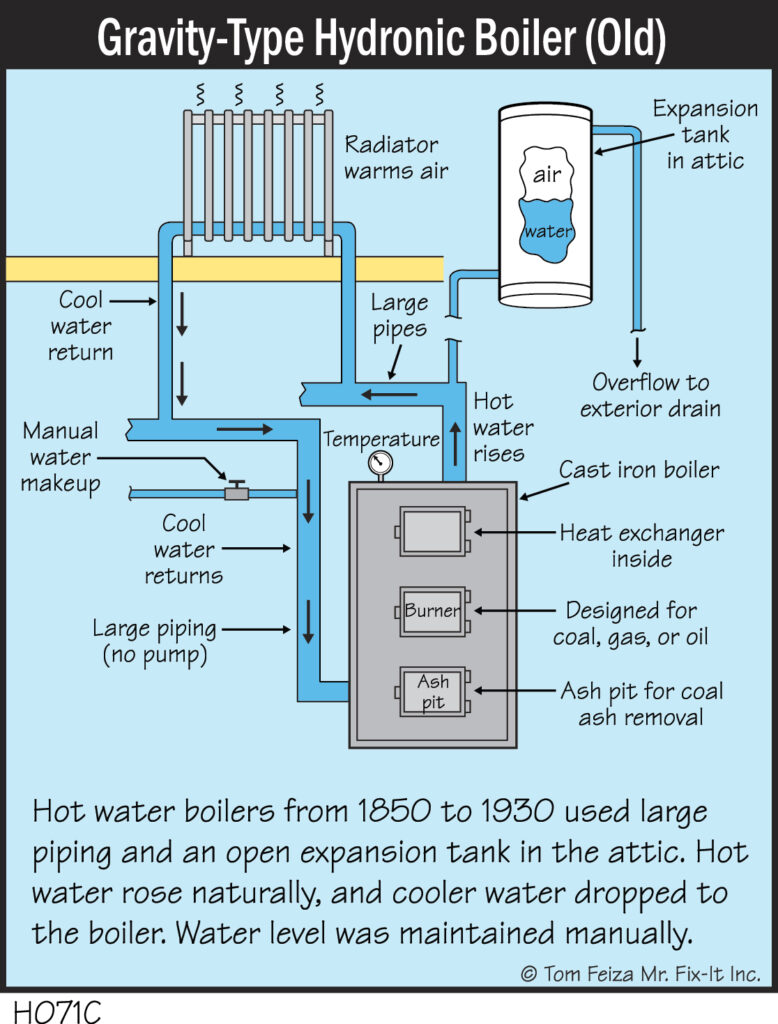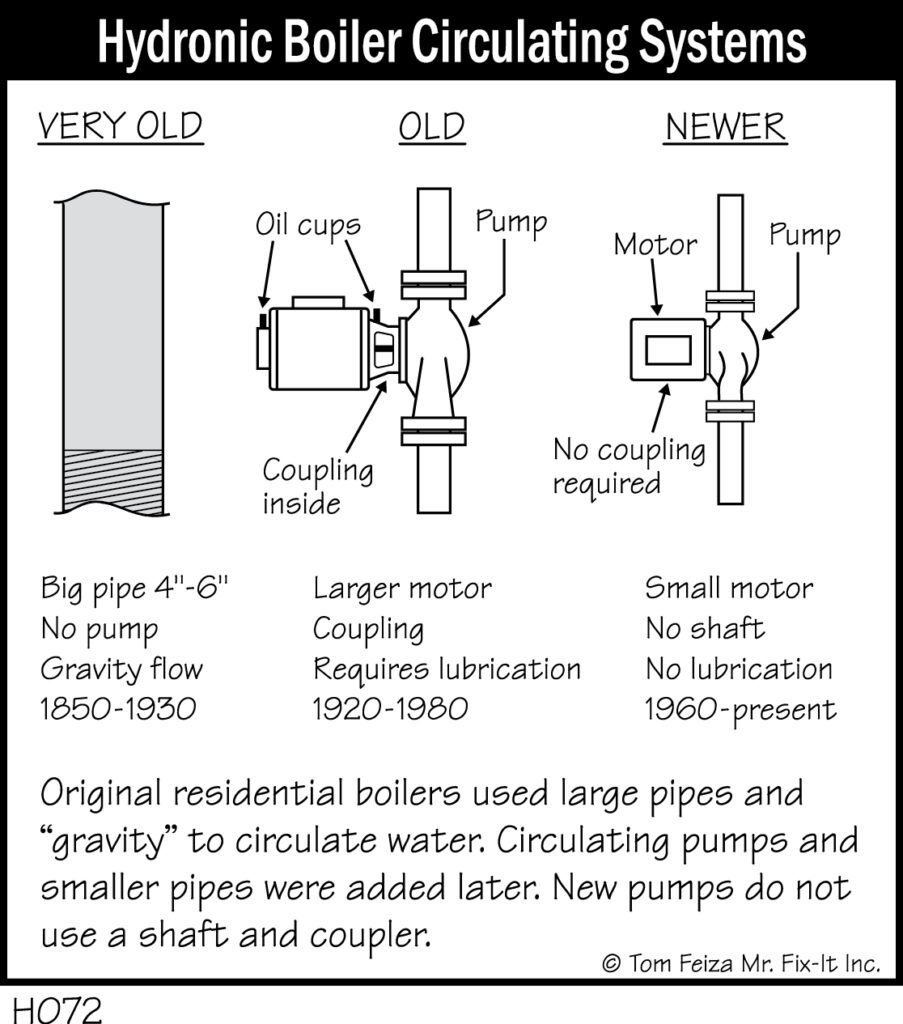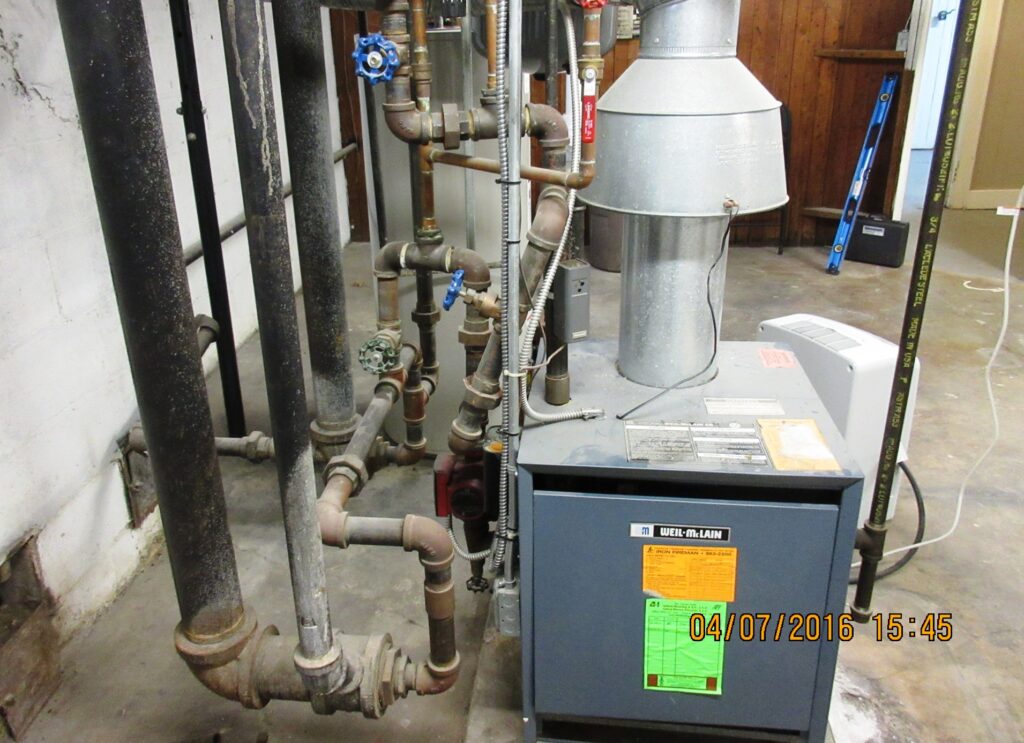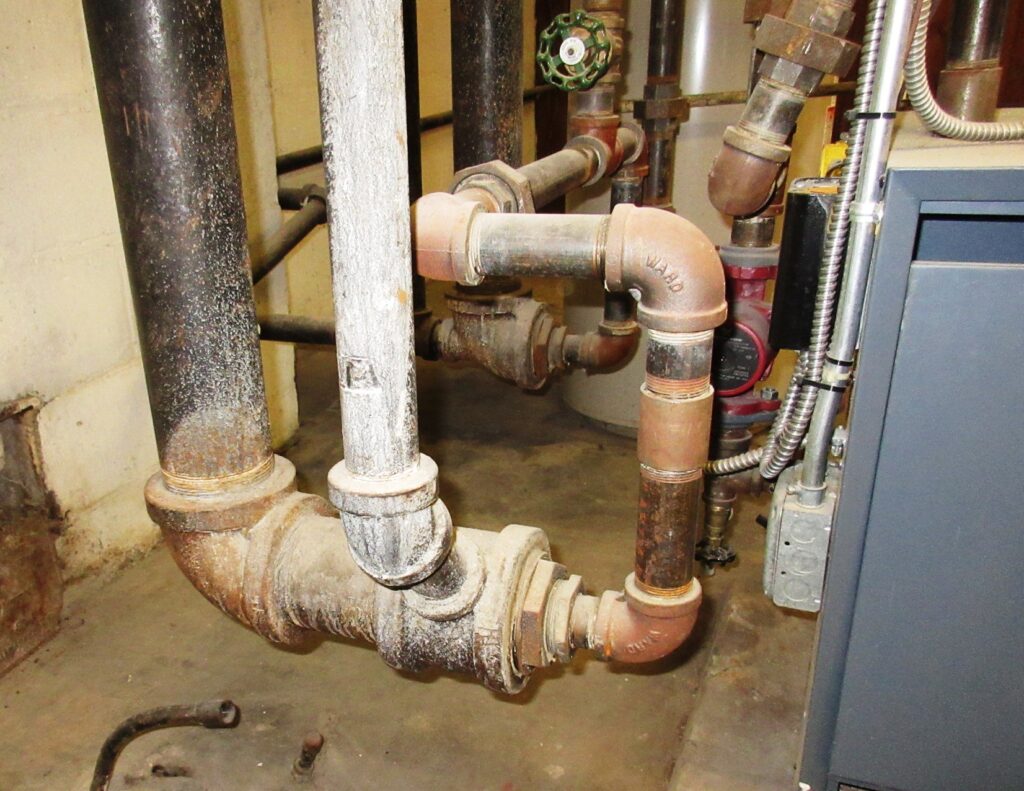By Tom Feiza, Mr. Fix-It, Inc.

If you’ve ever inspected a 100-year-old home with radiators, you have seen 4- to 6-inch pipes snaking through the basement; the large pipes are reduced to smaller ones that rise through the floor and connect to cast-iron radiators. A two-story home has large riser pipes that reach the second floor. You will also find an expansion tank in the attic. Most of these systems have been upgraded to new boilers with circulating pumps.
How the old gravity systems worked
The original gravity hydronic heating systems depended on hot water rising and cool water dropping from radiators (illustration H071C). Heat radiated into the room from air convection over the warm cast iron. The water cooled and naturally dropped through the return piping – there was no need for a circulation pump (illustration H072). When designed properly, these were very comfortable systems.


Most gravity systems converted
Eventually, as boilers were replaced, so were the gravity systems. The new boilers were much smaller and used smaller pipe fittings and circulating pumps (photo – Hydronic Boiler with Large to Small Piping). The pump forced water through the system at a much faster rate, moving much more energy. This allowed the use of smaller pipes and smaller boilers.

When inspecting one of these converted systems, you will see the original large piping necked down to smaller piping (photo – Close-up of Large to Small Hydronic Piping). The photo shows newer 1-inch black iron piping connected to the original 3- or 4-inch piping. This type of system would have been installed about 1980. After 1980, even smaller copper piping connected to the large piping. Modern systems may use special PEX piping.

What to do during your inspection
In most cases, the large old steel piping performs well, but look for leaks. Point out to the buyer that the piping system is original to the home and may need ongoing repair. Do your normal boiler inspection; fire the boiler with the normal operating control. Check the type of fuel, visible burner, pump, zone valves, water fill with backflow preventer, expansion tank, and heat sources in every room. If you see any leaks, burn marks, rust, or maintenance issues, suggest that the boiler heating system be evaluated by a specialist.
